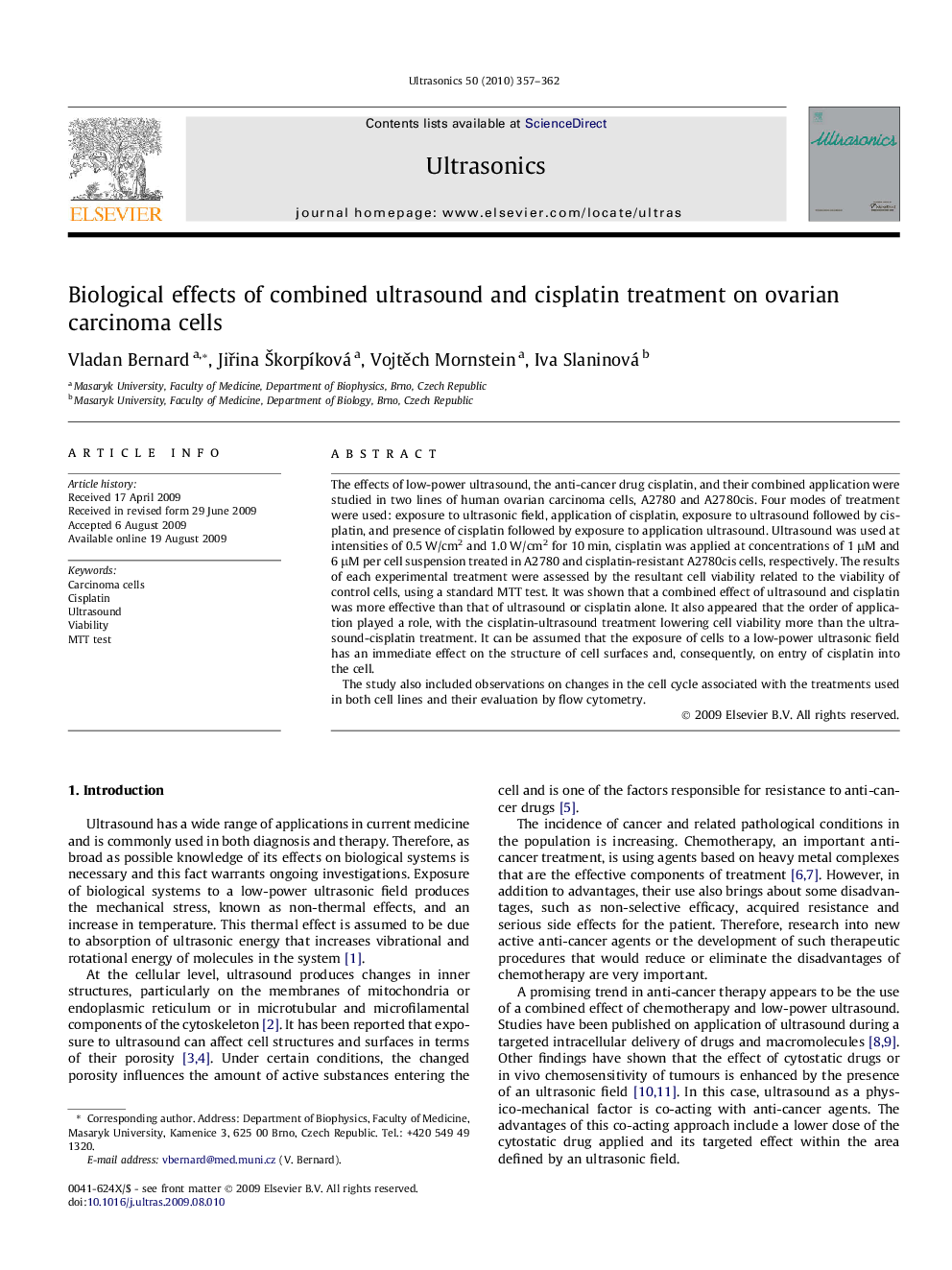| Article ID | Journal | Published Year | Pages | File Type |
|---|---|---|---|---|
| 1759654 | Ultrasonics | 2010 | 6 Pages |
The effects of low-power ultrasound, the anti-cancer drug cisplatin, and their combined application were studied in two lines of human ovarian carcinoma cells, A2780 and A2780cis. Four modes of treatment were used: exposure to ultrasonic field, application of cisplatin, exposure to ultrasound followed by cisplatin, and presence of cisplatin followed by exposure to application ultrasound. Ultrasound was used at intensities of 0.5 W/cm2 and 1.0 W/cm2 for 10 min, cisplatin was applied at concentrations of 1 μM and 6 μM per cell suspension treated in A2780 and cisplatin-resistant A2780cis cells, respectively. The results of each experimental treatment were assessed by the resultant cell viability related to the viability of control cells, using a standard MTT test. It was shown that a combined effect of ultrasound and cisplatin was more effective than that of ultrasound or cisplatin alone. It also appeared that the order of application played a role, with the cisplatin-ultrasound treatment lowering cell viability more than the ultrasound-cisplatin treatment. It can be assumed that the exposure of cells to a low-power ultrasonic field has an immediate effect on the structure of cell surfaces and, consequently, on entry of cisplatin into the cell.The study also included observations on changes in the cell cycle associated with the treatments used in both cell lines and their evaluation by flow cytometry.
